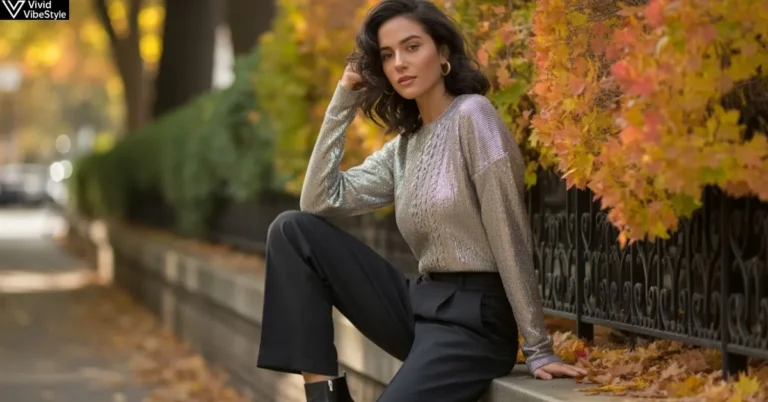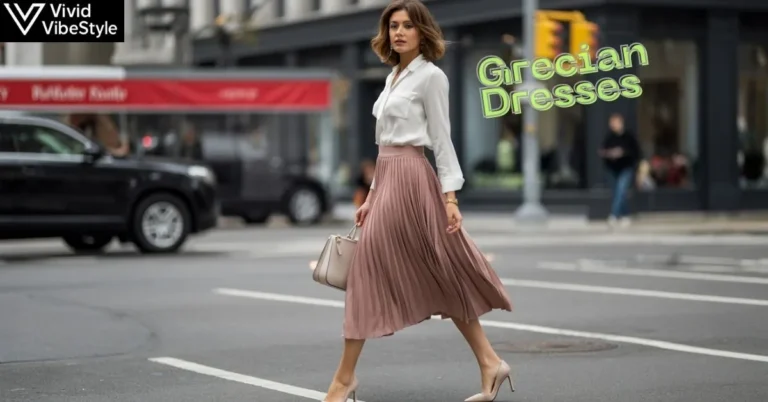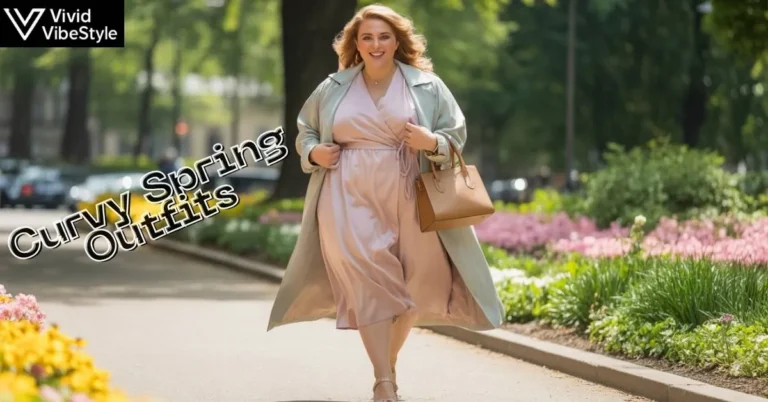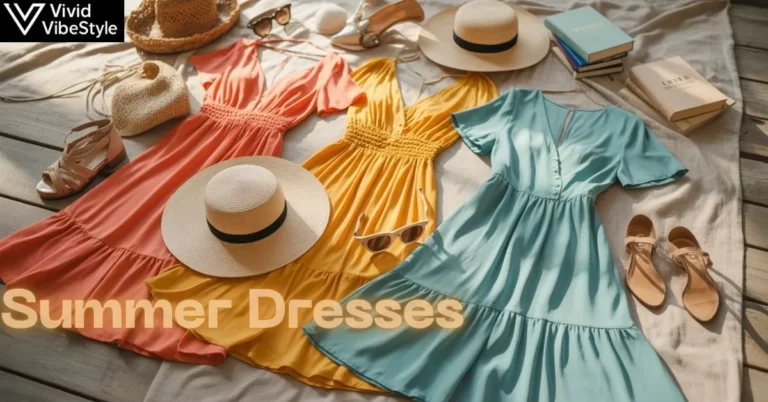The Complete Guide to Cold Weather Outfits for Winter: Style Meets Warmth
Winter’s biting chill shouldn’t force you to choose between looking good and staying warm. Every year, millions struggle with the same frustration: bulky winter clothing that makes them feel shapeless, or trendy pieces that leave them shivering outdoors. You stuff yourself into oversized coats, pile on mismatched layers, and still end up cold during your commute or weekend activities. The problem isn’t just discomfort, it’s the confidence drain that comes from looking like a walking sleeping bag when you’d rather feel put-together and stylish.
This struggle intensifies when temperatures plummet below freezing. Your favorite fall outfits suddenly feel inadequate, and you’re left grabbing whatever provides warmth without considering how pieces work together. Poor layering strategies lead to overheating indoors and freezing outdoors. Meanwhile, your wardrobe becomes a collection of random heavy coats, scarves, and boots that don’t coordinate, making getting dressed feel like a daily battle rather than an opportunity to express your style.
Fortunately, creating stunning cold weather outfits winter looks is entirely achievable with the right approach. This comprehensive guide reveals proven winter fashion techniques that combine thermal protection with contemporary style. You’ll discover how to build a versatile winter wardrobe, master strategic layering, and select pieces that work across multiple occasions. Whether you’re dressing for office environments, casual weekends, or special winter events, these insights will transform how you approach winter dressing while keeping you comfortably warm through the coldest months.
What Makes Cold Weather Outfits Winter-Ready?

Cold weather outfits winter essentials require specific characteristics that separate them from standard clothing. The fundamental difference lies in fabric composition and construction methods designed for insulation and weather resistance. Quality winter garments incorporate materials like wool, down, fleece, and synthetic insulated fabrics that trap body heat while allowing moisture to escape. These textiles create thermal barriers between your skin and frigid air, maintaining comfortable body temperature even when outdoor conditions become harsh.
Beyond fabric choice, winter-ready clothing features design elements specifically engineered for cold protection. Look for pieces with windproof outer shells, water-resistant coatings, extended coverage areas, and closure systems that seal out drafts. High collars, adjustable cuffs, longer hemlines, and strategic seam placement all contribute to garments’ ability to shield you from winter’s harshest elements. The best cold weather outfits winter combinations incorporate these technical features while maintaining aesthetic appeal and allowing natural movement throughout your day.
How Do You Build a Functional Winter Wardrobe Base?
Starting with foundational pieces creates the backbone for countless cold weather outfits winter combinations. Your base wardrobe should include three quality winter coats: a heavy-duty parka for extreme cold, a wool coat for dressier occasions, and a versatile mid-weight jacket for milder winter days. These outerwear options anchor your entire winter styling strategy and should be selected in neutral colors like black, navy, camel, or grey to maximize outfit versatility and pairing potential across your existing wardrobe.
Complement your coat collection with essential layering pieces that work across multiple outfits. Invest in thermal underwear, cashmere sweaters, fleece pullovers, turtlenecks, and cardigans in coordinating colors. Add winter bottoms including insulated jeans, wool trousers, thermal leggings, and corduroy pants that provide warmth without bulk. Complete your foundation with winter accessories: quality leather gloves, wool scarves, knit beanies, and insulated boots. This comprehensive base enables you to create dozens of cold weather outfits winter looks by mixing and matching key pieces throughout the season.
Read More About : Brown Outfits for Fall: Your Ultimate Guide to This Season’s Most Coveted Color Trend
Why Is Layering the Key to Winter Outfit Success?
Layering techniques represent the most effective strategy for managing body temperature and creating stylish cold weather outfits winter ensembles. The science behind successful winter layering involves three distinct layers working together: a moisture-wicking base layer against your skin, an insulating middle layer for warmth retention, and a protective outer layer shielding you from wind and precipitation. This three-layer system allows you to adjust your thermal comfort by adding or removing pieces as you transition between outdoor cold and heated indoor spaces.
Your base layer should consist of thermal underwear or merino wool pieces that pull sweat away from your body while providing initial warmth. The middle layer adds bulk insulation through fleece jackets, down vests, chunky knit sweaters, or quilted vests that trap warm air close to your torso. Your outer layer completes the system with weatherproof jackets or heavy coats that block wind and repel moisture. Understanding this layering hierarchy transforms how you approach cold weather dressing, giving you flexibility to adapt throughout the day while maintaining both comfort and style in your winter outfits.
What Are the Best Fabrics for Cold Weather Outfits Winter?

Natural fibers excel in winter clothing due to their superior insulation properties and breathability. Wool stands as the gold standard, offering exceptional warmth-to-weight ratio while naturally wicking moisture and resisting odors. Merino wool provides softness against skin, making it ideal for base layers and sweaters. Cashmere delivers luxurious warmth with less bulk, perfect for layering pieces worn close to the body. Down feathers create the ultimate insulating layer in puffer jackets and parkas, trapping body heat efficiently while remaining surprisingly lightweight for their warmth capacity.
Synthetic materials have revolutionized cold weather outfits winter with advanced performance fabrics. Fleece provides excellent thermal insulation at affordable prices and dries quickly when damp. Synthetic down alternatives offer warmth comparable to natural down while maintaining insulation even when wet. Technical fabrics like Gore-Tex and similar waterproof-breathable membranes create impenetrable barriers against rain and snow while allowing perspiration vapor to escape. Combining natural fibers for inner layers with synthetic shells for outer protection creates optimal cold weather clothing systems that keep you warm, dry, and comfortable regardless of winter conditions you encounter.
How Should You Style Cold Weather Outfits for Work?
Professional cold weather outfits winter require balancing workplace dress codes with practical warmth needs. Start with a tailored wool coat in a classic silhouette either a single-breasted design or wrap coat that layers smoothly over business attire without adding excessive bulk. Underneath, build your outfit with a silk or wool blouse, cashmere sweater, or turtleneck paired with wool trousers, a pencil skirt with fleece-lined tights, or insulated work pants in darker professional colors. This foundation maintains office-appropriate appearance while providing substantial warmth during commutes and outdoor breaks.
Workplace layering demands pieces you can easily remove when entering heated buildings. Consider cardigan sweaters, blazers, or structured vests that add warmth without committing you to full-day wear. Choose winter accessories that elevate professional looks: leather gloves, silk scarves, structured totes, and ankle boots with low heels suitable for winter sidewalks. Keep a backup sweater or shawl at your desk for temperature fluctuations in office spaces. These strategic cold weather outfits winter choices ensure you look polished while maintaining comfort throughout your workday, from morning commute through evening departure.
Read More About : Back to School Outfits: The Ultimate Stylish Guide for 2025
What Casual Cold Weather Outfits Winter Work for Weekends?
Weekend casual winter outfits embrace comfort without sacrificing style through relaxed silhouettes and practical fabric choices. Build around essential casual pieces: oversized sweaters, fleece-lined hoodies, flannel shirts, thermal henleys, and chunky knit cardigans that provide warmth with easygoing appeal. Pair these tops with insulated denim jeans, jogger pants, corduroy trousers, or legging pants designed with thermal linings for outdoor activities. Layer a puffer vest, quilted jacket, or sherpa-lined coat over your base outfit for additional warmth when temperatures drop significantly.
Weekend footwear prioritizes both function and fashion through winter boots that handle various conditions. Chelsea boots, combat boots, duck boots, and shearling-lined ankle boots combine weather resistance with contemporary styling suitable for casual outings. Complete your cold weather outfits winter weekend looks with relaxed accessories: knit beanies, infinity scarves, mittens, and crossbody bags that keep hands free for activities. This approach to casual winter dressing maintains your personal style while ensuring comfort during errands, outdoor adventures, weekend brunches, and relaxed social gatherings throughout the coldest months.
How Do You Create Stylish Cold Weather Date Night Outfits?

Evening cold weather outfits winter present unique styling challenges that require elegance without excessive coverage. Start with a statement coat that makes an immediate impression: a faux fur coat, velvet blazer, leather jacket, or structured wool coat in rich winter colors like burgundy, emerald, or camel. Underneath, select dressier pieces like a cashmere turtleneck paired with leather pants, a knit dress with opaque tights, or tailored trousers with a silk camisole layered under a cropped sweater. These combinations provide warmth while maintaining sophisticated appeal appropriate for restaurants, theaters, or upscale venues.
Date night accessories elevate your winter outfit from functional to fashionable. Swap bulky winter boots for heeled ankle booties or knee-high boots in leather or suede. Choose elegant accessories including leather gloves, a cashmere scarf, statement jewelry, and a structured clutch or small crossbody bag. Consider bringing a lightweight pashmina or wrap for additional warmth in over-air-conditioned restaurants. These thoughtful cold weather outfits winter choices ensure you look stunning for romantic evenings while staying comfortably warm during outdoor portions of your date, from arrival through departure.
What Are the Essential Winter Coat Styles Everyone Needs?
Puffer jackets dominate cold weather outfits winter for their unmatched warmth-to-weight ratio and modern aesthetic. These quilted coats filled with down or synthetic insulation trap body heat efficiently while allowing easy movement. Choose cropped puffer jackets for casual looks, mid-length styles for everyday versatility, or floor-length puffer coats for extreme cold protection. Modern puffer designs come in fitted silhouettes, oversized cuts, and various color options beyond traditional black, making them suitable for both athletic activities and urban street style.
Wool coats provide timeless elegance for dressy winter occasions and professional settings. Peacoats offer classic double-breasted styling that works across body types. Trench coats in wool blends provide sophisticated coverage suitable for business environments. Wrap coats create feminine silhouettes that flatter various figures. For maximum versatility in your cold weather wardrobe, invest in one heavy-duty parka with hood and windproof shell for harsh weather days, one mid-weight coat in a neutral color for everyday wear, and one dressy wool coat for occasions requiring elevated presentation. This three-coat strategy covers all scenarios you’ll encounter during winter months.
Read More About : Mini Uggs Outfit Ideas for 2025: Stunning & Cozy Styling Guide
How Can You Accessorize Cold Weather Outfits for Maximum Impact?
Winter accessories transform basic cold weather outfits winter into distinctive looks while providing essential warmth. Scarves offer the most versatile styling potential through various materials, patterns, lengths, and wrapping techniques. Oversized blanket scarves create dramatic focal points, infinity scarves provide easy styling, and silk scarves add elegant touches to professional outfits. Experiment with different scarf-tying methods including the Parisian knot, waterfall drape, loop wrap, and belted style to change your outfit’s entire appearance without purchasing new clothing pieces.
Hats and gloves complete your winter outfit while protecting exposed areas from harsh elements. Knit beanies suit casual looks, felt fedoras add sophistication, fur trapper hats provide maximum warmth, and wool berets bring French-inspired elegance. Choose gloves based on activity needs: leather gloves for professional settings, touchscreen-compatible gloves for phone use, mittens for maximum warmth, and fingerless gloves for tasks requiring dexterity. Statement jewelry, belt bags, structured totes, and winter boots in unexpected colors or textures further personalize your cold weather outfits winter, allowing you to express individual style despite layers of protective clothing.
What Color Palettes Work Best for Winter Wardrobes?

Neutral colors form the foundation of versatile cold weather outfits winter through their endless mixing potential. Black, charcoal, navy, camel, grey, and cream create sophisticated bases that pair effortlessly with virtually any accent color. These timeless neutrals in your coat collection and base layers allow you to build numerous outfit combinations from fewer pieces, maximizing your wardrobe efficiency. Monochromatic outfits in these neutral tones create elongating effects and polished appearances suitable for professional settings while providing flexibility to add colorful accessories for personality and visual interest.
Rich jewel tones and deep winter hues elevate seasonal style through colors that complement cold weather atmospheres. Burgundy, emerald, sapphire, plum, rust, and forest green add warmth and depth to winter outfits while remaining sophisticated. These seasonal colors work beautifully in sweaters, scarves, coats, and accessories, creating visual interest against snowy landscapes and grey winter skies. Incorporate winter whites, creams, and metallics for contrast and light-reflecting properties that brighten darker winter days. This balanced color strategy combining neutral foundations with strategic color accents ensures your cold weather outfits winter remain both practical and visually appealing throughout the season.
How Do You Dress for Extreme Cold Weather Conditions?
Extreme cold demands enhanced protection strategies beyond standard winter layering. When temperatures drop below 20°F (-7°C), your cold weather outfits winter require thermal underwear as mandatory foundation pieces, not optional additions. Choose merino wool or synthetic thermal sets that cover your entire torso and legs, creating a warm base that traps heat while wicking moisture. Add mid-weight layers including fleece-lined pants, heavy sweaters, and insulated vests before your final outer layer. This comprehensive layering system creates multiple air pockets that work together to maintain body warmth in dangerous cold conditions.
Extreme weather gear prioritizes function over fashion through specialized technical features. Your outer layer must include a heavy parka with down insulation, windproof shell, insulated hood, storm flaps over zippers, and extended length covering hips and thighs. Protect extremities with insulated winter boots rated for subzero temperatures, thermal socks, lined gloves or heavy mittens, neck gaiters or balaclavas, and ear-covering hats. Consider adding hand warmers and foot warmers for extended outdoor exposure. While these cold weather outfits winter may sacrifice some style for survival, many technical outerwear brands now offer surprisingly attractive designs that don’t completely abandon aesthetic appeal while delivering life-preserving warmth.
Read More About : 50 Comfy Fall Outfits That’ll Make You Look Effortlessly Chic This Season
What Are the Biggest Cold Weather Fashion Mistakes to Avoid?
Over-layering represents the most common error in cold weather outfits winter, resulting in restricted movement, excessive sweating, and discomfort. Wearing too many thick layers creates bulk that limits arm mobility, makes sitting awkward, and causes overheating in heated indoor spaces. Instead, focus on strategic layering using thin, high-quality insulating materials that provide maximum warmth with minimal thickness. Choose one excellent insulated coat over multiple mediocre jackets. This approach maintains comfortable body temperature while preserving your silhouette and allowing natural movement throughout daily activities.
Inadequate footwear ruins otherwise well-planned winter outfits through cold feet, wet socks, and slipping hazards. Wearing fashion boots lacking insulation and water resistance leaves feet vulnerable to frostbite and creates discomfort that affects your entire body. Similarly, prioritizing style over function with inappropriate accessories thin gloves, decorative scarves, or lightweight hats fails to protect exposed skin from winter elements. Invest in quality winter boots with proper tread patterns, insulated linings, and waterproof construction. Choose functional accessories that genuinely provide warmth. Your cold weather outfits winter should never compromise safety or comfort for the sake of trends that leave you physically miserable.
How Can You Transition Cold Weather Outfits from Day to Night?

Versatile base pieces enable smooth transitions from daytime activities to evening events without complete outfit changes. Start your day with a foundation that works in both contexts: dark jeans or trousers, a silk blouse or quality turtleneck, and a structured blazer or fitted sweater. During daytime, pair this base with flat boots, a casual coat, and practical accessories. Keep dressier elements in your bag or car for evening transformation. This strategic approach to cold weather outfits winter saves time and effort while ensuring you’re appropriately dressed for varied activities throughout your day.
Quick styling changes dramatically shift your outfit’s formality level through simple accessory swaps. Exchange flat boots for heeled ankle boots, trade your crossbody bag for a clutch or small handbag, remove your casual coat to reveal the elegant layers underneath, and add statement jewelry or a silk scarf. Touch up makeup, adjust your hair, and you’ve successfully elevated your daytime winter outfit into an evening-appropriate ensemble. This efficient transitional dressing strategy makes your cold weather wardrobe work harder, reducing the number of pieces you need while maximizing your styling options throughout winter months.
What Are the Best Cold Weather Outfit Ideas for Different Body Types?
Petite frames benefit from cold weather outfits winter that create vertical lines and avoid overwhelming proportions. Choose fitted coats that end at hip or mid-thigh rather than lengthy styles that shorten your appearance. Monochromatic layering in similar color tones elongates your silhouette. Opt for cropped sweaters, high-waisted bottoms, and heeled ankle boots that add height while maintaining warmth. Avoid oversized chunky knits and bulky scarves that swallow smaller frames. Instead, select fitted sweaters, tailored layers, and streamlined accessories that provide warmth without adding visual bulk that disproportionately affects petite body types.
Curvy figures shine in winter outfits that define the waist and create balanced proportions. Belted coats, wrap styles, and A-line cuts highlight your natural curves while providing comfort. Structured fabrics in coats and blazers create smooth lines, while stretchy knits offer comfortable fit across bust and hips. Layer with V-neck sweaters, open cardigans, and vertical scarves that draw the eye along your body’s length. Choose dark colors for base layers with colorful accessories at your face level. These cold weather outfits winter strategies celebrate your shape while ensuring all-day comfort and warmth throughout the winter season.
Read More About : Black Dress Classy: 50+ Sophisticated Ways to Style Your LBD with Timeless Elegance (2025)
How Do You Care for Winter Clothing to Extend Its Life?
Proper maintenance preserves your investment in quality cold weather outfits winter pieces, extending their functional life and appearance. Down coats and puffer jackets require special attention: wash infrequently using gentle cycles with specialized down detergent, dry on low heat with clean tennis balls to redistribute filling, and store hung or laid flat to prevent compression. Wool coats benefit from professional dry cleaning once per season, though regular brushing after wear removes surface dirt and prevents premature cleaning needs. Between wears, allow wet coats to dry completely before storage to prevent mildew and odor development.
Sweaters and knit garments last longer with proper handling techniques. Fold sweaters rather than hanging them to prevent shoulder stretching and shape distortion. Wash wool and cashmere items in cold water using wool-specific detergents, then lay flat to dry on clean towels. Remove pills with a fabric shaver or sweater stone to maintain a fresh appearance. Store winter clothing during off-season months in breathable cotton garment bags with cedar blocks or lavender sachets to deter moths. These garment care practices protect your cold weather wardrobe investments, ensuring your favorite winter outfits remain beautiful and functional for many seasons ahead.
What Sustainable Options Exist for Cold Weather Wardrobes?
Sustainable winter fashion reduces environmental impact through thoughtful purchasing and eco-friendly materials. Invest in quality pieces designed for longevity rather than fast fashion items requiring frequent replacement. Choose natural fibers like organic wool, recycled cashmere, and sustainable down certified by Responsible Down Standard. Many brands now offer recycled synthetic insulation made from plastic bottles, providing warmth comparable to traditional polyester fills while diverting waste from landfills. Vintage shopping and secondhand purchasing extend existing garments’ lifecycles while offering unique cold weather outfits winter pieces unavailable in current retail markets.
Circular fashion practices further enhance your sustainable winter wardrobe. Repair damaged winter clothing rather than discarding pieces with minor issues replace broken zippers, patch small tears, and reinforce worn seams. When garments no longer serve your needs, donate them to clothing banks, sell through resale platforms, or swap with friends. Choose brands committed to ethical manufacturing, fair labor practices, and transparent supply chains. Consider clothing rental services for special occasion winter outfits you’ll wear infrequently. These conscious choices reduce fashion’s environmental footprint while maintaining your ability to create stylish, warm cold weather outfits winter that align with your values and ethical standards.
How Can You Build Cold Weather Outfits on a Budget?
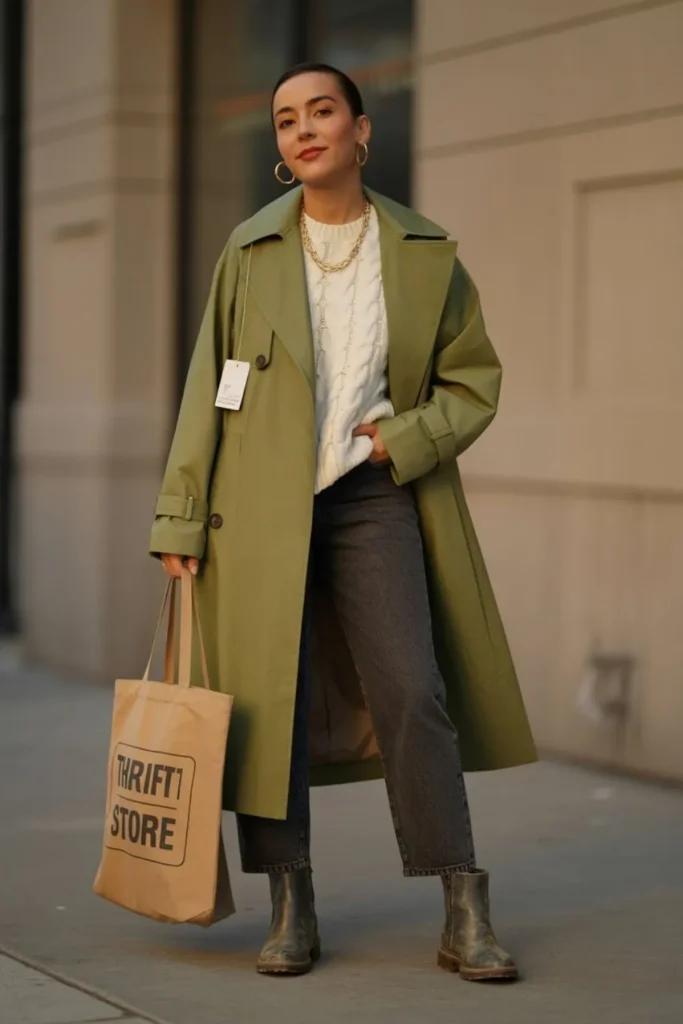
Budget-conscious winter dressing focuses on versatile foundational pieces that create multiple outfit combinations. Prioritize one excellent quality coat over several cheap alternatives this single investment pays dividends through superior warmth, durability, and styling potential across seasons. Shop end-of-season sales when retailers discount winter clothing by 50-70%, purchasing next year’s wardrobe at fraction of original costs. Thrift stores and consignment shops offer gently used winter coats, wool sweaters, and leather boots at remarkable prices, often featuring higher-quality construction than equivalent new fast-fashion items.
Creative layering maximizes existing wardrobe pieces without new purchases. Layer summer t-shirts under sweaters, wear spring dresses over thermal leggings with boots, and add scarves and belts to create fresh looks from tired combinations. DIY accessories including hand-knitted scarves, beanies, and mittens provide personalized warmth at material-only costs. Focus spending on items touching extremities quality boots, warm gloves, and insulated socks where cheap alternatives genuinely fail to perform. This strategic approach to cold weather outfits winter delivers style and comfort without financial strain, proving warm and fashionable winter dressing remains accessible regardless of budget constraints.
What Are the Latest Cold Weather Fashion Trends?
Oversized silhouettes dominate current cold weather outfits winter trends through dramatically proportioned coats, sweaters, and blazers. Puffer jackets appear in unexpected lengths, colors, and textures, moving beyond traditional athletic styling into high-fashion territory.
Maximalist layering embraces visible layers creating depth and dimension turtlenecks peeking from crew neck sweaters, shirt collars emerging from v-necks, and contrasting hem lengths showing intentionally. Statement outerwear in bold colors like electric blue, hot pink, and bright red challenges traditional neutral winter palettes, making coats the outfit’s focal point rather than afterthoughts covering actual style.
Textural mixing adds visual interest to winter outfits through unexpected material combinations. Pair leather pants with chunky knit sweaters, combine silk blouses with corduroy trousers, or layer velvet blazers over cashmere turtlenecks. Sustainable fashion influences winter wardrobes with eco-friendly materials, vintage pieces, and upcycled garments gaining mainstream appeal.
Functional fashion merges performance features with aesthetic design in technical fabrics, weather-resistant treatments, and athletic-inspired cuts appearing in everyday cold weather clothing. These fashion-forward trends demonstrate that cold weather outfits winter continue evolving, offering exciting options for expressing personal style while maintaining essential warmth and comfort.
Read More About : Bermuda Shorts Outfits: The Complete Style Guide for 2025
Frequently Asked Questions
What temperature requires a winter coat?
Most people need a winter coat when temperatures consistently drop below 45°F (7°C), though individual cold tolerance varies significantly. Below 32°F (0°C), insulated coats become necessary for comfortable outdoor time, while temperatures under 20°F (-7°C) require heavy parkas with substantial down or synthetic insulation for safety.
How many layers should you wear in winter?
Effective winter layering typically involves three layers: a moisture-wicking base layer, an insulating middle layer, and a weatherproof outer layer. However, the specific number depends on outdoor temperature, activity level, and time spent outside. You may need additional mid-layers when temperatures drop below 20°F (-7°C) or during extended outdoor exposure.
Can you wear dresses in cold weather?
Absolutely winter dresses work beautifully with proper layering techniques. Pair knit dresses or long-sleeve styles with fleece-lined tights, thermal leggings, knee-high boots, and cardigans or blazers. Add a coat and scarf for outdoor portions, creating elegant cold weather outfits winter suitable for various occasions while maintaining warmth.
What fabrics keep you warmest in winter?
Wool, cashmere, down feathers, fleece, and synthetic insulation provide the best warmth for cold weather clothing. Merino wool excels in base layers, down offers maximum warmth-to-weight ratio in coats, while fleece provides affordable mid-layer insulation. Technical fabrics with water-resistant and windproof properties enhance outer layers’ protective capabilities.
How do you avoid looking bulky in winter clothes?
Choose fitted base layers and mid-layers in thin, high-quality insulating materials rather than multiple thick pieces. Select tailored coats that follow your body’s natural lines, use belts to define your waist, and opt for monochromatic color schemes that create visual length. Strategic layering with quality fabrics provides warmth without excessive bulk in cold weather outfits winter.
What shoes work best for winter weather?
Insulated winter boots with waterproof construction and good tread patterns handle snow, ice, and cold temperatures most effectively. Ankle boots, knee-high boots, and duck boots with thermal linings provide style and function. For professional settings, leather boots with low heels and water-resistant treatments balance workplace appropriateness with winter practicality.
Conclusion
Mastering cold weather outfits winter transforms the season from a style challenge into an opportunity for creative expression. The strategic approaches outlined throughout this guide from foundational wardrobe building and effective layering techniques to sustainable choices and budget-conscious shopping provide comprehensive tools for creating countless warm, stylish combinations.
Whether dressing for professional environments, casual weekends, or special occasions, you now understand how fabric selection, color coordination, and thoughtful accessorizing work together to maintain both comfort and confidence throughout winter’s coldest days.
Your winter wardrobe becomes a curated collection of versatile pieces that mix and match effortlessly, eliminating morning stress while ensuring you’re appropriately dressed for any situation.
Remember that successful winter fashion balances practical warmth requirements with personal style preferences. Invest in quality coats, prioritize proper layering systems, protect your extremities with functional accessories, and maintain your garments through proper care practices.
Embrace current trends that resonate with your aesthetic while building a timeless foundation that transcends seasonal changes. With these proven strategies, your cold weather outfits winter showcase your unique personality while keeping you comfortably warm, allowing you to fully enjoy winter activities, social gatherings, and daily routines without compromising style or suffering through unnecessary cold.
Step into winter confident that you’re prepared to look and feel your absolute best, regardless of what the thermometer reads.


